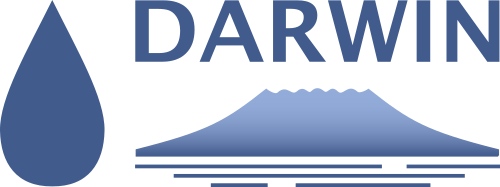Pasture Degradation Monitoring System (PaDeMoS) [funded by BMBF] - Status: closed
Project staff:
Prof. Dr. Jörg Bendix
Abstract:
 The Tibetan plateau is one of the largest rangeland regions in the world, and land use there has tremendous importance under both local and regional aspects. Changes in rangeland conditions will directly affect the livelihoods of the Tibetan people that rely heavily on ecosystem services provided by the rangelands. Changes in rangeland structures will influence discharge and sedimentation for major rivers that supply water for over 1 billion citizens. Finally, the structure of the boundary layer influences the development of large-scale climate systems such as the eastern Asian monsoon.
The Tibetan plateau is one of the largest rangeland regions in the world, and land use there has tremendous importance under both local and regional aspects. Changes in rangeland conditions will directly affect the livelihoods of the Tibetan people that rely heavily on ecosystem services provided by the rangelands. Changes in rangeland structures will influence discharge and sedimentation for major rivers that supply water for over 1 billion citizens. Finally, the structure of the boundary layer influences the development of large-scale climate systems such as the eastern Asian monsoon.
The rangelands of the Tibetan Plateau have been grazed since ancient times but rangeland health is currently deteriorating. Growing population and the governmental policy of sedentarisation of the traditionally nomadic herders triggered massive degradation. Ongoing climate change at least partly adds further pressures. Unfortunately, current monitoring schemes for pasture conditions rely mostly on a very limited set of indicators, and were often only validated for spatially limited regions. In fact, transferring indicators scheme among regions without calibration and validation is common practice.
The present project aims at the development of a Pasture Degradation Monitoring Scheme that is based on a broader set of – mostly organismic – indicators, and has been validated for a larger set of sites that are representative for the region under question – in the present project phase Tibet. Comprehensive field data are not yet available. The necessary data will be collected around 23 research stations that are spread over the eastern half of the plateau and represent all major climatic and topographic regions. The stations are part of existing governmental environmental monitoring schemes. At each site, transects will be sampled that run from degraded sites near settlements to less degraded rangelands in the larger surroundings. Collection of data in a standardized design and analysis of data with project-wide adopted methods will allow integrating data into a comprehensive set of multi-proxy indicators. These will be jointly evaluated and employed to classify degradation stages, which are mapped with methods of remote sensing. Maps, classification schemes and auxiliary information will be made available through an online platform (including a web-GIS), that allows to retrieve data collected and analyzed in PaDeMoS, but also gives access to classification schemes and allows submission and evaluation of new data.
Description:
 Four subprojects (SP) are needed to achieve the overall goals.
Four subprojects (SP) are needed to achieve the overall goals.
- SP Pollen: Pollen give an integrated picture of the vegetation, and allow tracking developments over large time scales. Monitoring of pollen rain also allows capturing seasonal changes and even successional developments over shorter time scales. In PaDeMoS, pollen rain will be monitored daily at selected core sites in order to capture short-term changes, allowing inferences concerning local weather but also land use conditions. Surface samples will be collected at all study regions, that will allow putting results into an appropriate spatial context but also analysing large-scale phenomena such as the development of the monsoon.
- SP Ants: Ant colonies utilize ranges of limited spatial extent and can be used to assess local habitat conditions. Ant colonies, but also foraging workers will be searched and sampled at the sites jointly used by all SPs. Degradation and climate gradients on pastures are analyzed on the basis of ants (Hymenoptera: Formicidae). Specific distribution characteristics on the level of species and on the society level (species richness, evenness, total abundance = nest density) will be described as a function of pasture degradation and climatic factors and will be used as indicative parameters. A digital, morphology-based determination system will be developed under use of Lucid-Key, which is supported by DNA-based identification in case of cryptic species.
- SP Vegetation and grazing: The vegetation provides some of the most commonly employed indicators for rangeland health. Here, we will sample vegetation at standardized plots along the local grazing gradients and large-scale climatic gradients, recording data on species richness but also plant community composition and cover of occurring species. Data are supplemented by sampling and analyzing plant nutrient contents, palatability, and soil nutrient pools. Cooperating partners in this SP will assess community composition of small mammals, which are both important indicators but also drivers of rangeland condition.
- SP Remote Sensing: A handheld spectrometer will be used to measure reflectance on the geo-referenced vegetation plots. Data will be upscaled using the appropriate platforms (Quickbird / Ikonos to Landsat / Spot and finally Modis), which allows larger-scale but also multi-temporal assessment of data. Transfer functions and degradation schemes developed jointly with all partners will then be mapped. The data, but also the available auxiliary information will finally be made available in a data warehouse with web-GIS functionality that will be partly developed, partly adapted to the needs of PaDeMoS.
- Data on human ecology and socio-economy are indispensable to put local observations in an appropriate context. Our Chinese project partners will thus support PaDeMoS by carrying out a parallel project that is devoted to human ecology at the main focus sites.
Further infos: http://www.pademos.org/
Publications and poster presentations:
2019 - Miehe, G.; Schleuss, P.; Seeber, E.; Babel, W.; Biermann, T.; Braendle, M.; Fahu, C.; Coners, H.; Foken, T.; Gerken, T.; Graf, H.; Guggenberger, G.; Hafner, S.; Holzapfel, M.; Ingrisch, J.; Kuzyakov, Y.; Lai, Z.; Lehnert, L.; Leuschner, C.; Li, X.; Liu, J.; Liu, S.; Ma, Y.; Miehe, S.; Mosbrugger, V.; Noltie, H.J.; Schmidt, J.; Spielvogel, S.; Unteregelsbacher, S.; Wang, Y.; Willinghöfer, S.; Xu, X.; Yang, Y.; Zhang, S.; Opgenoorth, L. & Wesche, K. (2019): The Kobresia pygmaea ecosystem of the Tibetan highlands - Origin, functioning and degradation of the world's largest pastoral alpine ecosystem: Kobresia pastures of Tibet. Science of the Total Environment 648, 754-771.
2018 - Wang, Y.; Lehnert, L.; Holzapfel, M.; Schultz, R.; Heberling, G.; Görzen, E.; Meyer, H.; Seeber, E.; Pinkert, S.; Ritz, M.; Fu, Y.; Ansorge, H.; Bendix, J.; Seifert, B.; Miehe, G.; Long, R.; Yang, Y. & Wesche, K. (2018): Multiple indicators yield diverging results on grazing degradation and climate controls across Tibetan pastures. Ecological Indicators 93, 1199-1208.
2017 - Meyer, H.; Lehnert, L.; Wang, Y.; Reudenbach, C.; Nauss, T. & Bendix, J. (2017): From local spectral measurements to maps of vegetation cover and biomass on the Qinghai-Tibet-Plateau: Do we need hyperspectral information?. International Journal of Applied Earth Observation and Geoinformation 55, 21-31.
2016 - Lehnert, L.; Wesche, K.; Trachte, K.; Reudenbach, C. & Bendix, J. (2016): Climate variability rather than overstocking causes recent large scale cover changes of Tibetan pastures. Scientific Reports 6, 24367.
2015 - Lehnert, L.; Meyer, H.; Wang, Y.; Miehe, G.; Thies, B.; Reudenbach, C. & Bendix, J. (2015): Retrieval of grassland plant coverage on the Tibetan Plateau based on a multi-scale, multi-sensor and multi-method approach. Remote Sensing of Environment 164, 197-207.
2014 - Lehnert, L.; Meyer, H.; Meyer, N.; Reudenbach, C. & Bendix, J. (2014): A hyperspectral indicator system for rangeland degradation on the Tibetan Plateau: A case study towards spaceborne monitoring. Ecological Indicators 39, 54-64.
2013 - Meyer, H.; Lehnert, L.; Wang, Y.; Reudenbach, C. & Bendix, J., Measuring pasture degradation on the Qinghai-Tibet Plateau using hyperspectral dissimilarities and indices(Proc. SPIE, 2013).
- Lehnert, L.; Meyer, H.; Meyer, N.; Reudenbach, C. & Bendix, J., Assessing pasture quality and degradation status using hyperspectral imaging: a case study from western Tibet(Proc. SPIE, 2013).




